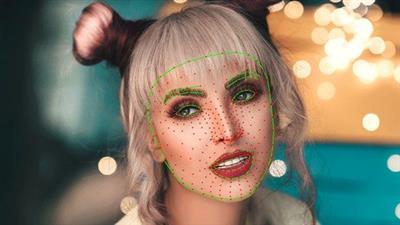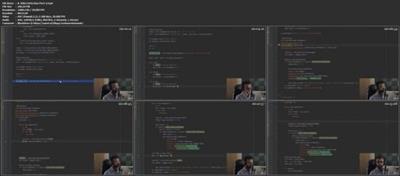StreamLit OpenCV Computer Vision Web App
- 04.09.2021
- 173

Genre: eLearning | MP4 | Video: h264, 1280x720 | Audio: AAC, 48.0 KHz
Language: English | Size: 1.27 GB | Duration: 1h 21m
How to build a Computer Vision Web Application using StreamLit MediaPipe in Python & OpenCV
What you'll learn
Build a StreamLit Analytics Dashboard
Integrate Computer Vision into StreamLit
Learn how to use MediaPipes Face Landmark Detection on Images and Video
Implement Widgets, Sliders and checkboxes
OpenCV Python and StreamLit WebApp Development
Description
In this course, we are going to learn how to build from scratch a Computer Vision Web Application using StreamLit in Python and OpenCV. We'll start off by coding the StreamLit User Interface with Python only and then combine it with Googles' Media Pipe Library to perform face landmark detection in real-time. From there we'll create three pages:
The first webapp page will tell us a little about the Web App and the Author,
The second page of the UI one helps us to infer Face-Mesh on a single image, and
The third will allow us to implement Real-Time face landmark detection on a video at 30FPS.
What's really great about this is that unlike native OpenCV apps is that you can actually interact with the app and make adjustments and create neat and professional dashboards with this.
If you don't already know, StreamLit can turn data scripts into shareable web apps in minutes. All in Python. All for free. NO front-end, HTML, JAVA experience required.
This course is a full practical course, no fluff, just straight on practical coding.
Requirements
Please ensure that you have the following:
Basic understanding of Computer Vision
Python Programming Skills
Mid to high range PC/ Laptop
Windows 10/Ubuntu
Screenshots

Download link:
rapidgator_net:
https://rapidgator.net/file/20187b2468c6d15afde0243ec877bb7e/i1lj1.StreamLit.OpenCV.Computer.Vision.Web.App.part1.rar.html
https://rapidgator.net/file/a01f38322fd2a7eeeb89ad0cf96a3001/i1lj1.StreamLit.OpenCV.Computer.Vision.Web.App.part2.rar.html
uploadgig_com:
https://uploadgig.com/file/download/Ecdc6277e0Fa8260/i1lj1.StreamLit.OpenCV.Computer.Vision.Web.App.part1.rar
https://uploadgig.com/file/download/9DCF84ee19cf01bd/i1lj1.StreamLit.OpenCV.Computer.Vision.Web.App.part2.rar
ddownload_com:
https://ddownload.com/i15li6qkucaf/i1lj1.StreamLit.OpenCV.Computer.Vision.Web.App.part1.rar
https://ddownload.com/m97n64nz4dzs/i1lj1.StreamLit.OpenCV.Computer.Vision.Web.App.part2.rar
https://rapidgator.net/file/20187b2468c6d15afde0243ec877bb7e/i1lj1.StreamLit.OpenCV.Computer.Vision.Web.App.part1.rar.html
https://rapidgator.net/file/a01f38322fd2a7eeeb89ad0cf96a3001/i1lj1.StreamLit.OpenCV.Computer.Vision.Web.App.part2.rar.html
uploadgig_com:
https://uploadgig.com/file/download/Ecdc6277e0Fa8260/i1lj1.StreamLit.OpenCV.Computer.Vision.Web.App.part1.rar
https://uploadgig.com/file/download/9DCF84ee19cf01bd/i1lj1.StreamLit.OpenCV.Computer.Vision.Web.App.part2.rar
ddownload_com:
https://ddownload.com/i15li6qkucaf/i1lj1.StreamLit.OpenCV.Computer.Vision.Web.App.part1.rar
https://ddownload.com/m97n64nz4dzs/i1lj1.StreamLit.OpenCV.Computer.Vision.Web.App.part2.rar
Links are Interchangeable - No Password - Single Extraction